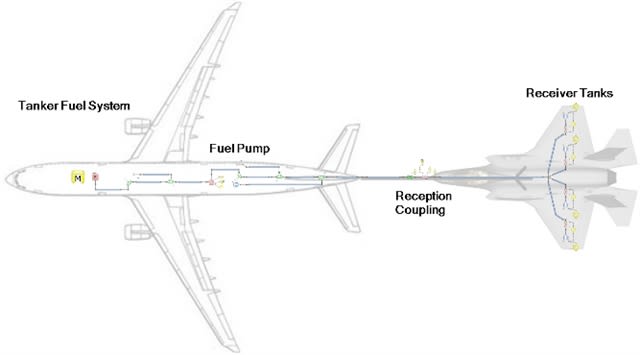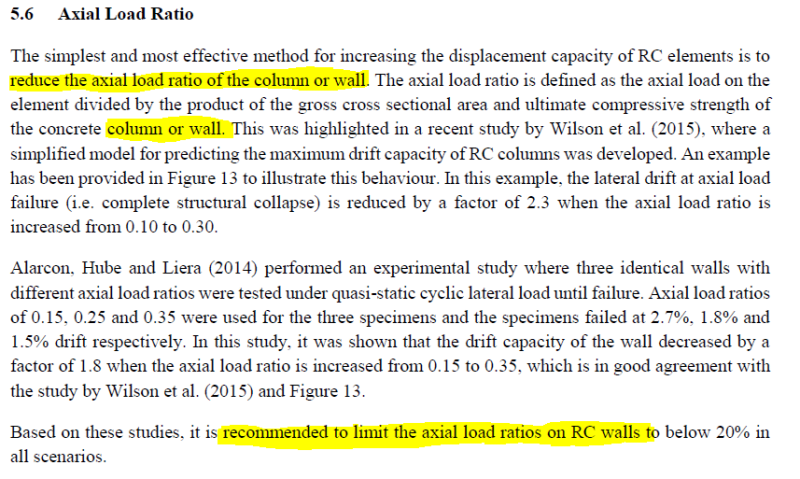QSIIN
Structural
- Apr 21, 2013
- 50
Hi all,
Just want to get some opinions on the changes to "structural walls" in new 2018 AS3600.
Section 14.2.10 defines a structural Wall as:
"Wall (either load bearing or non-loadbearing) connected to floor diaphragms that attracts horizontal earthquake and wind design actions".
At what point is a wall considered to "attract" EQ and wind actions? If we're talking about "gravity only" walls in a structure that has a stiff core and other lateral resisting shear walls, these elements might attract just a fraction of lateral actions - but they still attract some as they are connected to the diaphragm, but can you argue they aren't part of the lateral system and therefore do not need to comply with section 14, save for drift consideration? Or does pretty much any vertical compression element that is not explicitly a "column" now count as a "structural Wall" and must comply with 14.4.4.3?
Subject to the above, if you have "gravity only" walls, to section 11 in lieu of columns, but a ductile core, is the whole structure ductile or non-ductile? Even if the walls aren't part of the primary lateral system?
Section 11.5.2(b) limitations for the simplified wall design:
"Not to be constructed on sites with soil classification of De or Ee, AND where subjected to earthquake design actions"
Are those two limits mutually exclusive? Can you have walls that are constructed on De soil but not subject to EQ? Is that even possible? Can you have walls on Ce soil classification that are subjected EQ actions?
I think both these points are too vague and not explicit enough in their intent, and will be exploited to get away with using simplified wall deisgn in excess and to continue ignoring seismic design.
I understand the code is not meant to be a detailed how-to guide and their must be engineering judgement, but from my experience unless the code says "can do A, cannot do B", option b will be a viable solution for some..
Just want to get some opinions on the changes to "structural walls" in new 2018 AS3600.
Section 14.2.10 defines a structural Wall as:
"Wall (either load bearing or non-loadbearing) connected to floor diaphragms that attracts horizontal earthquake and wind design actions".
At what point is a wall considered to "attract" EQ and wind actions? If we're talking about "gravity only" walls in a structure that has a stiff core and other lateral resisting shear walls, these elements might attract just a fraction of lateral actions - but they still attract some as they are connected to the diaphragm, but can you argue they aren't part of the lateral system and therefore do not need to comply with section 14, save for drift consideration? Or does pretty much any vertical compression element that is not explicitly a "column" now count as a "structural Wall" and must comply with 14.4.4.3?
Subject to the above, if you have "gravity only" walls, to section 11 in lieu of columns, but a ductile core, is the whole structure ductile or non-ductile? Even if the walls aren't part of the primary lateral system?
Section 11.5.2(b) limitations for the simplified wall design:
"Not to be constructed on sites with soil classification of De or Ee, AND where subjected to earthquake design actions"
Are those two limits mutually exclusive? Can you have walls that are constructed on De soil but not subject to EQ? Is that even possible? Can you have walls on Ce soil classification that are subjected EQ actions?
I think both these points are too vague and not explicit enough in their intent, and will be exploited to get away with using simplified wall deisgn in excess and to continue ignoring seismic design.
I understand the code is not meant to be a detailed how-to guide and their must be engineering judgement, but from my experience unless the code says "can do A, cannot do B", option b will be a viable solution for some..





